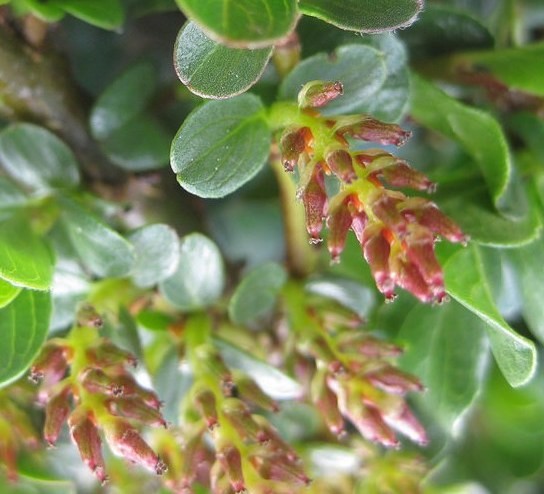Salix myrsinites
(Salix myrsinites)

Description
Salix retusa is a species of flowering plant in the family Salicaceae. Salix retusa can reach a height of 10–30 centimetres (3.9–11.8 in). This plant usually develops creeping stems, rarely erect. The dull green leaves are obovate, lanceolate or elliptic, with entire margins, 2 × 1 cm, with very short petioles. Like all willows this species is dioecious. Catkins are broadly cylindrical, with yellow anthers. Flowers bloom from June to July. It is present in the mountains of central and southern Europe including the Pyrenees and the mountains of Bulgaria. This species can be found in rock crevices and screes at elevation of 2,000–2,700 metres (6,600–8,900 ft) above sea level. The willow genus or willow genus (Salix) is a genus in the willow family, and grows as trees, shrubs, rice or herbaceous dwarf shrubs. The trees in the genus are usually called willow trees, while the more shrub-like species are usually called willow. Otherwise, arrows are usually called the species that have flowering and leaf splitting at the same time, while species that bloom on bare twigs are called willow. The genus has over 400 species. The grayish bark of the wood is smooth or rough and with a wood that often has ridges under the bark. Its winter buds have a bud scales and the leaves are strewn, simple and notched or finely sawn. The willow is a two-story building with flowers gathered in axillary pendants. Fertilizers of willow species have been found in tertiary strata in Europe, Asia and in Arctic regions, and these older species are often close to now living tropical willow species with many stamens. In older Quaternary deposits, modern northern varieties of willow are beginning to emerge. Traces of willow have been found in Italy and in Europe's pre- and postglacial peat layers of several today alpine and arctic species such as dwarf willow, net willow and polar willow.
Taxonomic tree:







